Female Soldier in the Civil War Several hundred women disguised themselves as men and took the bold step of leaving the comforts of home to serve their country during the Civil War. Frances Clalin Clayton disguised herself as a man and took the name Jack Williams in order to fight in the army. For several months, she served in Missouri artillery and cavalry corps. Frances Clalin was born in Illinois in the 1830s. She married Elmer Clayton and gave birth to three children. The Claytons lived on a farm in Minnesota. Some women dressed like men and marched off to war with a relative. Others enlisted because they had no means to support themselves after their loved one left home….
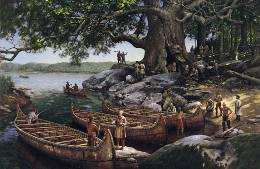
Native Americans of Pennsylvania
Image: We Dined in the Hollow Cottonwood Tree By Robert Griffing During the Celeron Expedition in the summer of 1749, the French were on a mission to assert claims to the Ohio Valley. The party stopped for the night and dined in the enormous tree in the Allegheny Forest in Pennsylvania. From the diary of Father Joseph Pierre Bonnecamp: “We dined in a hollow cottonwood tree in which twenty-nine men could be ranged side by side.” Pennsylvania Natives When first discovered by Europeans, Pennsylvania was inhabited by groups of Native Americans. The life of the Indians reflected Stone Age backgrounds, especially in material arts and crafts. Tools, weapons, and household equipment were made from stone, wood, and bark. Transportation was…
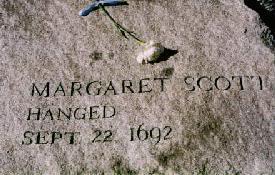
Margaret Stevenson Scott
Accused of Witchcraft Born Margaret Stevenson in England in about the year 1615, she first appeared in the record books in 1642, when she married Benjamin Scott. Initially the Scotts lived in Braintree, Massachusetts, but later moved to Cambridge where they had four children between 1644 and 1650. The Scott family arrived in Rowley (a small town north of Salem) in 1651, where Margaret gave birth to three additional children. The Scotts lacked the money to purchase their own land, and in 1664 the town donated land to Benjamin Scott. In March of 1665, Benjamin Scott was convicted of the crime of theft, for which he was “fined and admonished.” However, six months later he took the Freeman’s Oath, indicating…
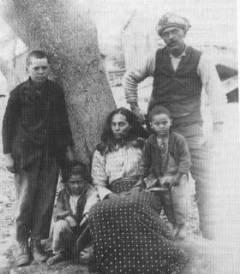
Queen Anne of the Pamunkey
Queen of the Pamunkey Native Americans Image: Pamunkey Sarah Langston Major and her family The Pamunkey Native American tribe were the most powerful tribe in the great Powhatan Confederacy, which consisted of 35 tribes with a population of some 10,000 people under the leadership of Chief Powhatan. His territory encompassed the entire coastal plain of Virginia, from south of the James River to near Washington, DC. The chief was living among the Pamunkey when the English colonists first arrived in Virginia. Queen Anne (ca. 1650 – ca. 1715) became the chief of the Pamunkey tribe when her aunt Cockacoeske died. Due to her authoritative position, she was always called Queen Anne by the colonists.
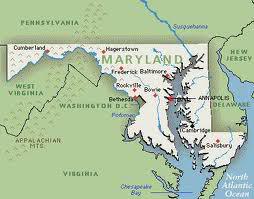
Slavery in Maryland
History of Slavery in Maryland Maryland’s history as a slaveholding state was unique. Few land holdings in the state would have rated the name of plantation in the eyes of slaveholders from the Southern States, because the average number of enslaved persons owned by each slaveholder in Maryland was only three. Founding of Maryland Maryland developed from a tract of country belonging to the original grant of Virginia. George Calvert, the First Lord Baltimore, was looking for land with a similar climate to that of England on which to establish his new colony. He put his sights on obtaining land in Virginia, parts of which had already been colonized.
Letitia Burwell
Civil War Civilian Letitia Burwell was born on a plantation in Virginia and spent most of her life in the rural regions of that state. Her book, A Girl’s life in Virginia Before the War (1895), records her memories of the antebellum South. Burwell’s descriptions of life on the plantation are filled with pastoral scenes of a wealthy Virginia family engaged in the daily pleasures of their time. Burwell recalls tales and stories passed down from neighbors and family members that she feels epitomize the quality of life in the South. She tells of social dances, food, the relationships that her family had with their slaves and life among family members. She defends the South against the criticism by outside…

Slavery in Delaware
Colonial Delaware Delaware began as New Sweden, an abortive attempt by the Swedes to found a colony on the shores of Delaware Bay in the New World. There were few immigrants, and the colony suffered from a chronic shortage of manpower. It had only 183 residents by 1647. The Swedes also tried to join the rush by European powers to get footholds in West Africa to gain access to gold and slaves, but they were soon driven out by more aggressive European powers. The Swedes turned to Indian slaves when they could get them, but disease and westward migration had already emptied the region of native tribes. Still, a few Indian slaves persisted in Delaware until the 1720s, and the…

Slavery in Virginia
History of Slavery in Virginia Image: In the Richmond Slave Market Beginning with the arrival of the first Africans in Jamestown in 1619, a system of hereditary bondage for blacks gradually developed. Over the course of 150 years, slavery became entrenched in Virginia society, increasingly supported by a series of restrictive laws. Slavery was the foundation of Virginia’s agricultural system and essential to its economic viability. To attract settlers, English citizens were offered land if they came to the new colony as indentured servants, and planters relied on these servants to harvest their tobacco. But once the servants had served their terms of indenture – usually seven years – they became free men and women, and were given fifty acres…
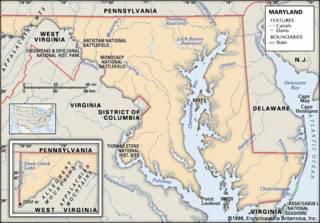
Native Americans of Maryland
Maryland Indian Tribes The first Marylanders were Paleo-Indians who came more than 10,000 years ago from other parts of North America to hunt mammoth, great bison, and caribou. By 1000 B.C., Maryland had more than 8,000 Native Americans in about 40 different tribes. Most of them spoke Algonquian languages. They grew corn, peas, squash and tobacco. They also hunted, fished and traded with tribes as far away as New York and Ohio. The word Chesapeake, as in Chesapeake Bay, came from the Native American word “Chesepiuk,” an Algonquian name for a village that the Roanoke, Virginia, colonists discovered in 1585 near the mouth of the Bay. Later, mapmakers used the word to name the Bay. People have said that Chesapeake…
Lucy Pomeroy
Civil War Nurse in Washington, DC In 1803, some families from Bristol and Meriden, Connecticut, moved to the wilderness of New York, and settled in what is now Otisco, Onondaga County. Among these were Chauncey Gaylord, a sturdy, athletic young man, just arrived at the age of twenty-one, and “a little, quiet, black-eyed girl, with a sunny, thoughtful face, only eleven years old.” Her name was Dema Cowles. So the young man and the little girl became acquaintances, and friends, and in after years lovers. In 1817 they were married. Their first home was of logs, containing one room, with a rude loft above, and an excavation beneath for a cellar. In this humble abode was born Lucy Ann Gaylord,…